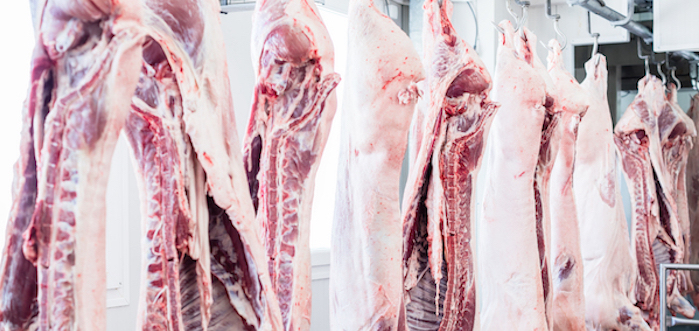Farmgate prices for Scottish pigs are the strongest they have been since mid-2014 and 38% higher than this time last year, according to the latest Quality Meat Scotland (QMS) analysis.
The pig price for Scottish producers is 38% higher than this time last year, although this falls to 21%, when quoted in euros and allowing for exchange rate movements.
However, this euro price increase for Scotland looks modest when compared with the 33% year-on-year increase in the average pig price across the European community, said Stuart Ashworth, Head of Economics Services with QMS.
Looking at the background to the current price situation, Mr Ashworth said that across the UK and Europe the basic supply of pigmeat is slightly lower than last year.
“Defra slaughter data shows prime pig slaughtering to have fallen about 2.5% year-on-year during March and to have tightened further in April although slightly higher carcase weights mean the decline in pork production is not so great,” he said.
So, across the UK and Europe producer price is being supported by lower production. However, he said, the UK December census showed a growth in the number of young pigs on-farm that would indicate some growth in UK production as the year progresses.
“In contrast, consolidated December census data from across Europe shows a breeding herd population slightly down for the second year in a row.
“Indeed pigmeat production in the European Union is forecast to be 1% lower than last year throughout 2017. However, while the EU is expected to have a tighter supply throughout the year it remains about 120% self-sufficient and this explains why the EU is the world’s largest exporter of pigmeat,” said Ashworth.
In this regard, the more striking feature of the current pigmeat market, he said, is the role of international trade in price determination.
“Globally, there has been significant growth in international trade and particularly in trade in the Asian region. European Union trade data shows a growth in exports to China during 2016 of 63% and growth continuing into 2017 with January and February exports to China from the EU up 13%,” said Ashworth.
There has also been useful growth in shipments to Japan and South Korea over the past 18 months. As a consequence, he said, the exclusion of the EU from the Russian market has not impacted on producer prices across Europe.
“The UK has also benefited from this growth in Asian demand which has seen exports grow by one third to make up one quarter of all UK pigmeat exports. This increased Chinese trade is in frozen product which has helped to run down frozen stocks, tightening supply further.”
Looking forward, China, Japan and South Korea are all expected to import more pigmeat in 2017 than they did in 2016. However, with growth in production expected in the USA (the world’s second largest pigmeat exporter after the EU) and Brazil (the world’s fourth largest pigmeat exporter) during 2017 it is possible global pigmeat prices may cool.
Growth in US pigmeat production in recent months has already led to some cooling in US farmgate prices for pigs, Ashworth said.
Closer to home, retail demand for fresh pork products continues to be challenging with Kantar Worldpanel research showing a decline of 1% in high street sales of fresh pork over the past quarter compared to the same period last year.
“However, overall use of pigmeat is increasing. In the final quarter of 2016 the total volume of pigmeat available to the UK market increased by 6.5% and while some of this may have resulted in increased stocks, it does suggest greater use of pigmeat in delicatessen and processed products and out-of-home eating,” he said.
Bacon rolls, sausages and ham sandwiches remain popular as do pork-based ready meals and these pigmeat-based added-value products remain important contributors to the strength of farm gate prices.




